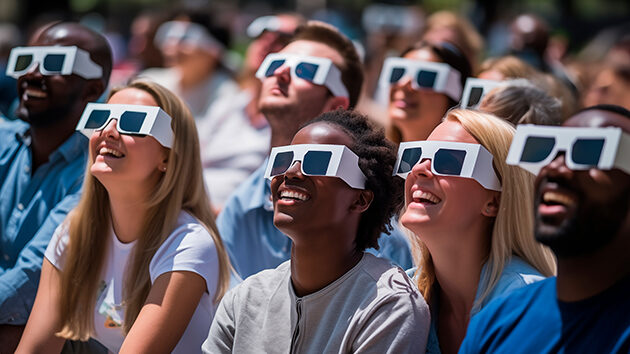Retina Expert Explains Safe Eclipse Viewing

Don’t ever look directly at the sun, even during an eclipse.
That’s the advice from retina specialist Jonathan Huz, MD, assistant professor of ophthalmology at Albany Medical College, in advance of the total solar eclipse that will cross western and northern New York on April 8.
In the Capital Region, the moon will cover about 97 percent of the sun at the height of the eclipse, meaning the whole sun won’t ever be fully blocked out.
“Like any other day, looking directly at the sun for an extended amount of time – more than just a few seconds – during any stage of a partial eclipse can damage your retina,” said Dr. Huz.
This condition, called solar retinopathy, can cause blurriness, impairment of color vision, distortion, and even blind spots in or around the central vision.
Many people may see improvement over time, but there is no treatment that has been shown to be effective and the damage can be permanent, added Dr. Huz.
Dr. Huz advises that the only safe way to view an eclipse is with eclipse glasses that have been approved by the American Astronomical Society. “These glasses are 1,000 times darker than regular sunglasses,” said Dr. Huz. “Regular sunglasses won’t block out enough light to prevent damage.”
He warns that parents and teachers should be careful with children at the time of the eclipse. According to Dr. Huz, children’s eyes are more susceptible to damage from the sun than adult eyes. In addition, the duration and intensity of exposure will impact the amount of damage to the retina. It may take a few hours, or even the next day, to notice the effects.
“The bottom line is, if you want to look at the eclipse, the only safe way to do so is to wear eclipse glasses,” said Dr. Huz.